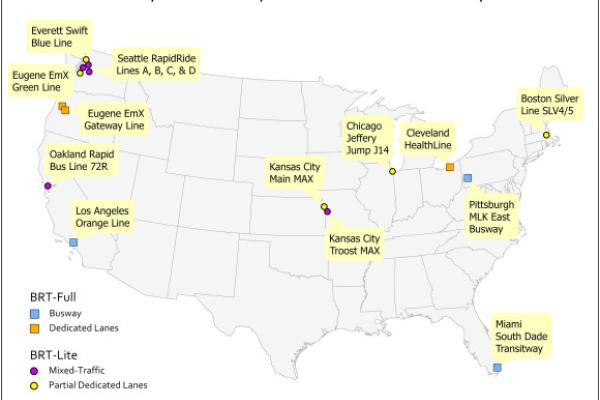Impacts of bus rapid transit (BRT) on residential property values: A comparative analysis of 11 US BRT systems

A new article co-authored by CURA director, Harvey Miller, has been published in the Journal of Transport Geography. This study fills substantial gaps in the literature about the impact of BRT on property values. Their results indicate that an amenity-rich BRT with on-street dedicated lanes can have a substantially positive impact on multi-family property values. On the other hand, off-street busway systems result in no significant change or decrease in single-family property values.
Abstract:
Bus rapid transit (BRT) is growing in popularity as a lower-cost alternative to light rail transit. Although the impacts of rail transportation on residential property values is well-explored, the impact of BRT on property values remains less well-understood, particularly in the United States where BRT infrastructure is more heterogeneous than the rest of the world. This paper addresses this gap by evaluating and comparing the before-and-after effect of 11 BRT systems on nearby property values in ten metropolitan areas across the United States. We used a quasi-experimental approach and hedonic spatial error models with propensity score matching to measure change in residential property transaction prices within walking distance of a BRT station. Overall model results show a mix of appreciation, depreciation, and no change in residential properties value across different BRT systems. Multi-family properties nearby BRTs with on-street dedicated lanes generally experienced the most appreciation while single-family properties around off-street busway systems experienced depreciation. BRT-lite systems without dedicated lanes associate with property appreciation in relatively dense and congested metropolitan areas with developed transit networks and high ridership. Our model results emphasize the ability of BRT to improve transit accessibility in these regions and to provide an attractive alternative to driving. Furthermore, the lack of property appreciation around busways indicates these systems may not provide nearby residents with an amenity bonus greater than its nuisance effects. Our study informs stakeholders and public officials about the broad effects of BRT on land values and invites researchers to continue investigating the role of walkability, nuisance effects, and individual BRT amenities on residential property values.
Authors: Blake Acton, Huyen Le, Harvey Miller
